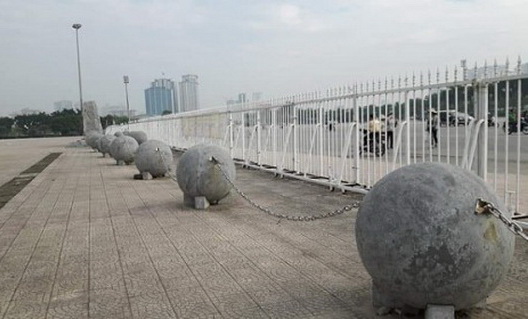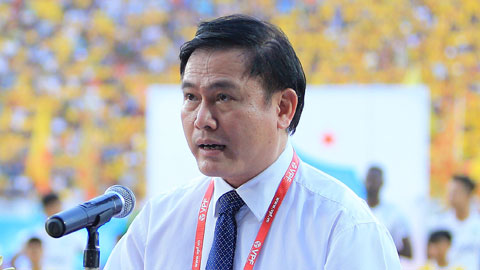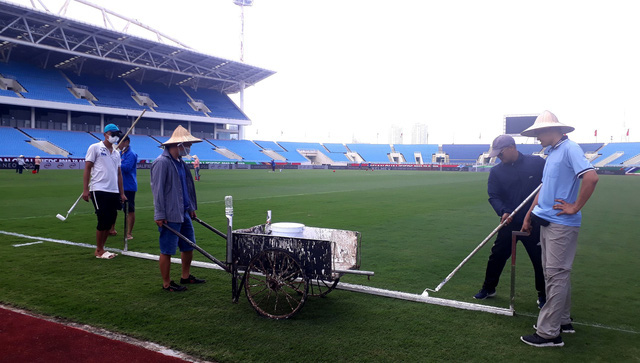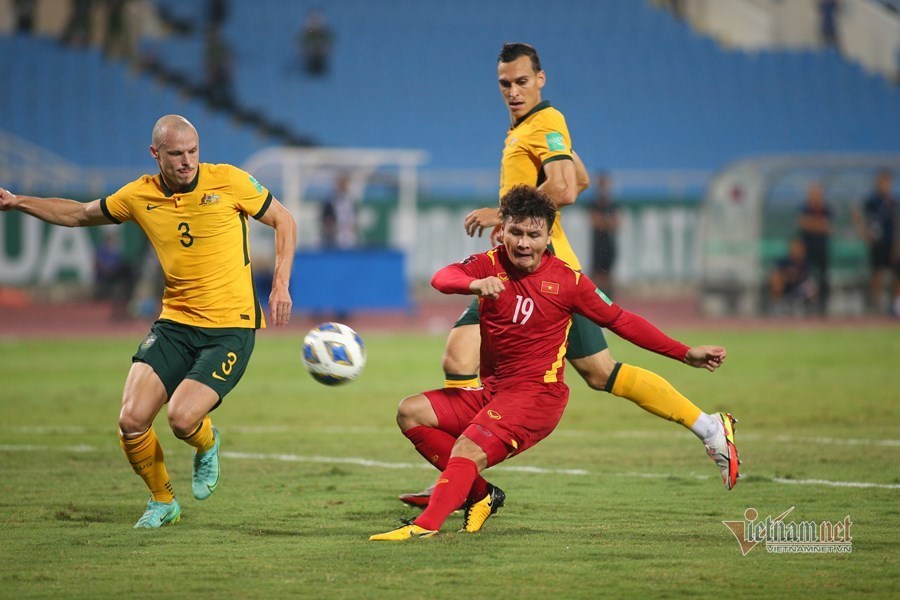How the 2022 FIFA World Cup game between Vietnam and Australia became a symbol of widespread state corruption in Vietnam?
This was one of the many images captured from the Mỹ Đình National Stadium, the largest sporting facility in entire Vietnam. You may see this was a football (or soccer) action on the field, yes, the match between Vietnam and Australia during the campaign for Qatar 2022. But, if you keep your eyes closer to the field, you may have to doubt this.
I'm talking about Vietnam's widespread state corruption.
The Mỹ Đình facilities were built in 2001 as an attempt to refurbish Vietnam's image on its path of economic reintegration following decades of isolation and international sanctions due to the war in Cambodia. And why it was built? Simply, for the 2003 Southeast Asian (SEA) Games, by that time the largest sporting event had ever been hosted in the country. There were hopes that Vietnam could be guaranteed a special place for future international competitions in case of any football games scheduled here.
The 2003 SEA Games finally broke the barrier and gave the Vietnamese people a chance to represent themselves to the world. Still, Vietnam was not selected as a host nation immediately during the run for the 2007 AFC Asian Cup host when Thailand, Indonesia and Malaysia presented three separate bids. However, after the AFC suggested that four Southeast Asian nations should be provided as hosts the same year, Vietnam was reluctantly included in the camp. If Vietnam had been given the chance to bid for such a tournament, Vietnam would have abandoned the attempts due to its inability to provide the financial need for a big continental tournament.
So, the state knew that Vietnam would be unable to host big tournaments if not for foreign investments and encouragement to re-engage with the world. Yet, instead of using the money gathered in these competitions to improve the facilities, it fell into a systematic Ponzi scheme as we can see from it.
The United States Securities and Exchange Commission once provided about the Ponzi scheme, perhaps for me is the most accurate depiction about it.
A Ponzi scheme is an investment fraud that pays existing investors with funds collected from new investors. Ponzi scheme organizers often promise to invest your money and generate high returns with little or no risk. But in many Ponzi schemes, the fraudsters do not invest the money. Instead, they use it to pay those who invested earlier and may keep some for themselves.
The scheme has been witnessed in a number of nations, such as Bosnia and Herzegovina, Moldova, Venezuela, Sudan, Cuba, Kosovo, Libya, Pakistan, the Philippines, Iraq, Bulgaria, Myanmar, Romania, Afghanistan, Palestine, Nicaragua, DR Congo and most recently Lebanon. All of them shares a common: the fraudsters are no other than their own governments.
Unfortunately, Vietnam, governed by the Communist Party, is built up from a partially-based hierarchy system, where loyalists are posed to become the next generation leaders to resist all kinds of reforms. This has enabled the Ponzi scheme to go without any question as the state media censored bad news about the Communist Party. In my place of living alone, I have to witness a newly-built shiny police station with the cost remains not investigated, though I expect the station itself covered much of the money that should have been used to repair the Mỹ Đình.
Go back to Mỹ Đình: back in 2000 when the state announced a competition to find a constructor for the facilities, the bidding had already been blurred by controversies. A French company was accused of corruption, a Chinese-based affiliating company and a German company violated the technical and financial requirements; adding to the lack of transparency in decision making and how to build the facilities. In the end, the Chinese affiliating company won and constructed the stadium. It lost only a year before it was handed to the state - but by that time, many unregistered documents went unfounded, and the secretive nature of the Chinese company meant it became unclear if the Chinese really wanted any good intentions for Vietnamese football future. It was seen after 15 years: 40 chained stone balls were removed. According to Fengshui masters, the 40 chained stones surrounding the stadiums had harmed the lucks from fully reaching the stadium, contributing to Vietnam's lack of success since its inauguration. However, it was only an iceberg within the ice: the chained circle stones already cost $17 million out of $53 million.
 |
| The chained balls before their removal. |
This blew me up to a question: how did these balls come here in the first place? It was unclear because the Chinese investor which was behind the construction of the stadium had already ceased to exist. Wasting nearly $20 million to bring these balls only to see itself nothing useful outside making scenery... and shame for the national team. This is typical evidence of a Ponzi: unregistered and secretive paperwork.
By the time the balls were removed, the facilities surrounding the stadium had deteriorated greatly. This shocked so many Vietnamese official observers, who ended up demanding a complete overhaul of the project. However, since the announcement in 2018, little progress was made. We could blame the COVID-19 pandemic for hampering the progress, yet the blame also lied on the mismanagement of the officials since they didn't care about this. Shockingly, where did the money go?
The Ponzi scheme hence came back like a ghost. Since claiming the title as the leader of the Communist Party, Secretary Leader Nguyễn Phú Trọng launched a crackdown of dissidents as he sought to strengthen the power of the party. Yet for a dictator behind the stage is a collective paranoia of absolutism. Trọng is hungry for the search of becoming an absolute dictator - a reason why he placed his henchmen in the first place.
One of his henchmen is the current President of the Vietnam Professional Football Joint-stock Company (VPF), Mr Trần Anh Tú. Mr Tú himself had a close tie to the party and was entrusted to cooperate with the other clubs in coordination with the slow professionalization of Vietnamese football. However, Mr Tú was accused by the other football owners of trying to take control of every football affair (just recently ceded some possessions), much to the similarities by traits, to the Secretary Leader of the VCP.
 |
| VPF President Trần Anh Tú, renowned for making Vietnam a rising futsal power, but controversial due to power-searching attitudes and disregard of football development. |
Yes, he did a great job contributing to the rise of Vietnamese futsal, but he was also a hungry power seeker. He didn't want anyone to challenge his reign. He lacked any formal communication with the other football clubs, much to the dismay of many owners. When the pandemic was ravaging Vietnam since summer 2021, questions about adopting the bubble travel to continue the league uninterrupted was placed, but Mr Tú failed to secure it by preventing the other business people from making comments. As for the result, the V-League season of 2020 was suspended from May without any clear sign of returning. He had already announced that this league's season would be cancelled without fully consulting the clubs, lingering greater anger against the federation and the VPF. Fears of repercussions saw Mr Tú requesting the media to not publish such news.
Having loyalists in power guaranteed the same scheme. Instead of bothering the reparation of the already-deteriorating stadium, the money was spent in the pocket of Mr Tú's personal enterprise Thái Sơn Nam and for the Communist Party members. All of these businesses were done in the football world with little investments for football teams in return. Only one club got the good: the Thái Sơn Nam futsal club, which bears the name of VPF President's company.
Hence, while the majority of football clubs in Vietnam are in the grave of bankruptcy, some near dissolution, criticism against him mounted. Sadly, it is just a small photo of a bigger picture.
Adding more pains for us, the staff that should be handled to refurbish the grass pitch is no other than a small group of people carrying... cow rickshaws to paint the white line, much to the dismay of so many Vietnamese fans who had expected improvements. In foreign stadiums of some more developed nations, for example in Southeast Asia, notably Thailand, the pitching staff have already been equipped with new pitch painting cars.
 |
| The pitching staff of Mỹ Đình. For years, the mismanagement of the facilities left the reparation comes to a halt. |
By stealing the people's pockets, the Communist Party mismanaged everything on its own. The deteriorating condition of Mỹ Đình facilities, and perhaps the majority of Vietnamese sporting facilities, was far long not addressed until when Vietnam qualified for the third round, where the state of corruption in Vietnam unravelled. It was not a surprise that the Australian reporter Nic Savage commented to the pitch like a "cow paddock", echoed by Lee Gaskin and a number of Australian sports watchers. It even got the same comments from Socceroos' Graham Arnold and Trent Sainsbury after the frustrating win. The response from the VFF officials, so far, was weak, only by claiming that it got the approval from the AFC - even though as I have once mentioned, the AFC's standard is poorly defined given the corrupt nature of the AFC itself.
To be honest, I don't trust the Communist Party, even though I refrained from criticising it due to my mother's position. But the Mỹ Đình stadium has now become the image of how Vietnam should not represent to the world. Painfully, ignorance and power-hungry people within this party are unlikely to bother our words, unless they have to be suspended - which is very difficult to think of, due to the Party's protection toward its corrupt fellows.

Comments
Post a Comment